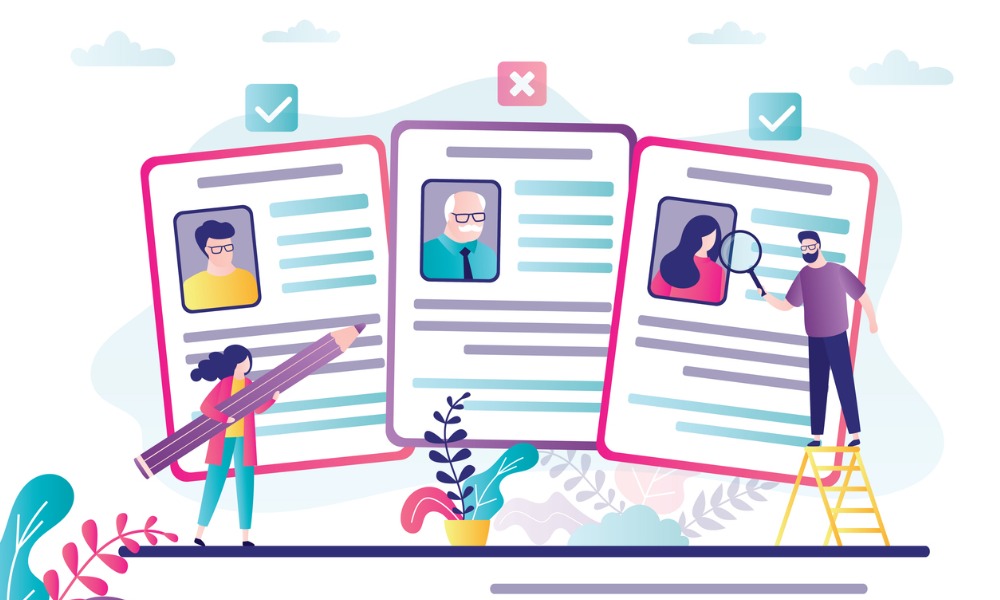PSYCHOMETRIC TESTING is helping large numbers of unemployed people get back into the workforce by enabling companies to recruit based on inner capabilities rather than previous experience and skills – allowing employers to tap into an often forgotten talent pool.
PSYCHOMETRIC TESTING is helping large numbers of unemployed people get back into the workforce by enabling companies to recruit based on inner capabilities rather than previous experience and skills – allowing employers to tap into an often forgotten talent pool.
Sixty-one per cent of recently placed jobseekers from the highly disadvantaged jobseeker groups would not have gained sustainable employment without the use of competency assessments, according to Michael Hughes, executive director of Jobfind.
Through the use of a recently launched assessment tool, CMyPeople – which was developed by HR company Chandler MacLeod based on the Australian government’s research into the employability skills needed to fill Australia’s skills shortage – 33 per cent more unemployed people from that group were placed into sustainable employment than prior to its inception.
According to Hughes, these people would not have won the jobs without the assessment report. He said that by profiling candidates it allowed him to demonstrate to both the candidate and the employer that they had the competencies and potential to succeed in a certain endeavour – thus building confidence on both parts.
“There can be a certain amount of cynicism coming from the job seeker as they often think we are steering them into a job just so we can get them off the books … and that actually we don’t really believe they can succeed in that job,” said Hughes.
“However if we can say: ‘Look, it’s not us who’s saying you have the competencies, it is this assessment report’ then they’re more confident and more committed to pursuing a job application for the particular role which the report matches them to,”he said.
There are also great benefits for employers. While the unemployment rate is the lowest in more than 30 years, there are still thousands of unemployed people who can provide a benefit to business, according to Hughes.
“Two thirds of Australian businesses don’t even consider this as another avenue they can go to,” he said. “I’m not saying that the thousands of people in Australia at the moment who don’t have a job are necessarily the best people for your business.
“But to not look at that avenue – I think a business owner is shortchanging themselves,” he said.
CMyPeople was developed based on the Australian government’s research into the employability skills needed to fill Australia’s skills shortage.
The system was the result of a four-year program – involving Chandler Macleod’s consultants and psychologists, the Australian Federal Government, ACCI, the Business Council of Australia and more than 200 participating organisations – to identify the employability skills required by industry.
The research resulted in the development of a nationally accepted Employability Skills Framework, which Chandler Macleod has enhanced into 36 competencies on which the CMyPeople assessment and profiling technology is modelled.
It is not just used, however, to place unemployed people back into the workforce. It is also being used to place working employees into more suitable roles within the organisation.
The launch of CMyPeople was in conjunction with research that revealed that 2.2 million working Australians are unhappy in their chosen careers or professions.
The research also showed that an astonishing 53 per cent of Australian workers did not plan their careers but fell into them. It also showed 20 per cent of Australian workers are actively looking for new jobs or careers, 44 per cent are keeping an eye out for another job, and 18 per cent looking for an opportunity to switch careers.
Around 5 per cent of workers who are not currently looking for a new job or career intend to do so soon.
Kevin Chandler, executive director of Chandler Macleod and the pioneer of CMyPeople, said, “Not only does Australia have an escalating skills shortage, we currently have millions of people who are working in jobs they are not suited to and, as a result, are either actively or passively looking for other career opportunities without knowing what they really want.
“Unfortunately, for most people, finding a job or career is a chaotic process and it seems the majority of Australians choose a career path based on flimsy criteria at best,”Chandler said.
“No science is applied and more often than not, people’s career paths are left to chance. A disturbing number of people report that they just ‘fell into’their current careers,” he said.
He continued to say that most Australians have insufficient information about the plethora of jobs that are available or, their own competencies, in order to make good career choices. In addition, most businesses have limited understanding of the range of competencies available from their own employees.
Given this situation, he said the ability to assess and measure competencies and match those to jobs is essential for accurate candidate selection and effective talent management.








